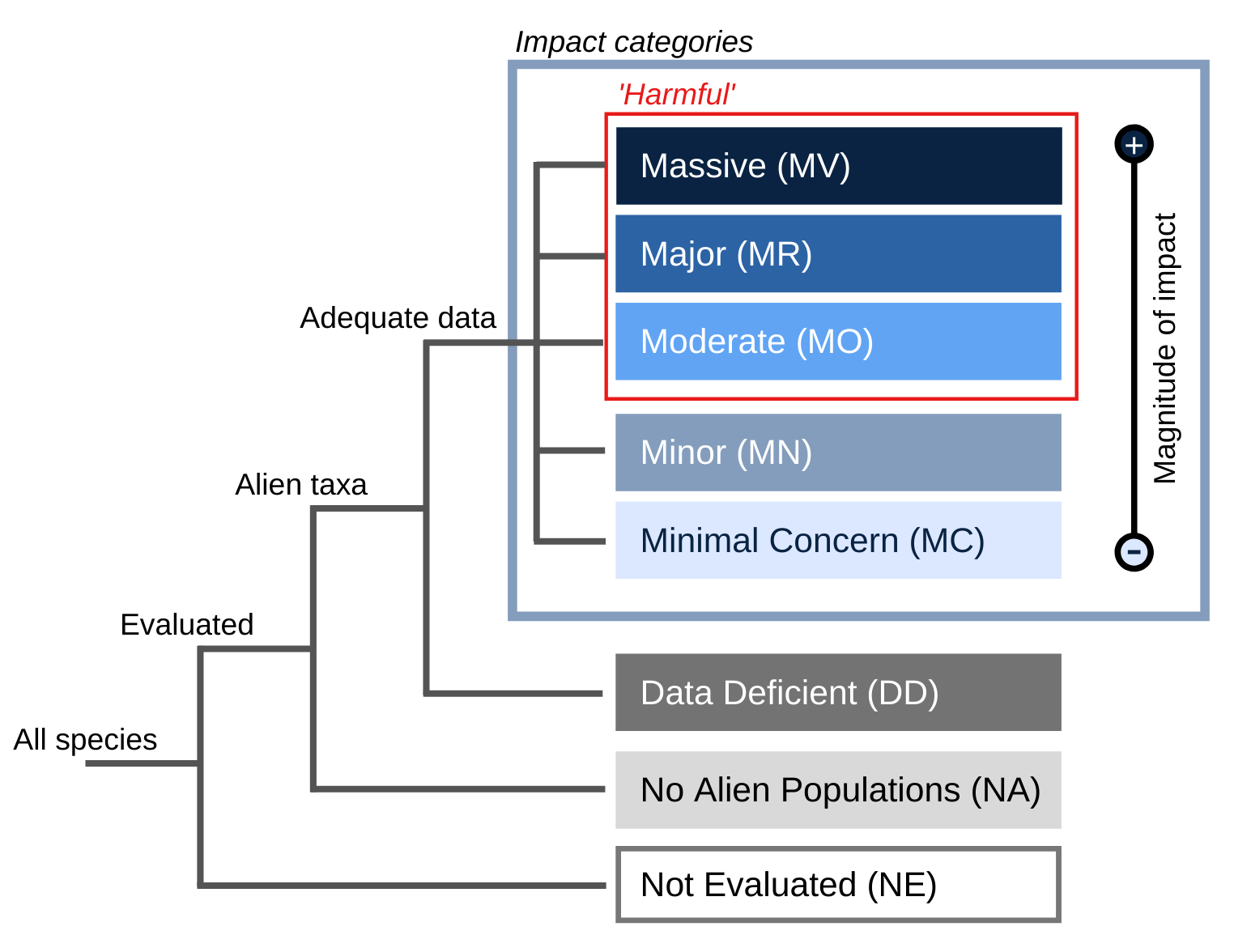- General
- Distribution
- Impact
- Management
- Bibliography
- Contact
Principal source:
Compiler: IUCN/SSC Invasive Species Specialist Group (ISSG) with support from the Forestry Division (Council Of Agriculture) Taiwan
Review: Expert review underway
Publication date: 2007-10-01
Recommended citation: Global Invasive Species Database (2025) Species profile: Hemiberlesia pitysophila. Downloaded from http://iucngisd.org/gisd/species.php?sc=1202 on 03-11-2025.
Chemical: Studies on chemical control of the pine armoured scale seriously infests pine trees were conducted during 1988 and 1989 in Guangdong Province, China. Oil emulsion, formulated by mixing rubber tree seed oil (or chinaberry seed oil) with the diesel oil at a ratio of 3:7 (with an emulsifier) was highly effective. Ground spray application showed that at concentration of 5% the product gave a control of up to 90-100%. In aerial spray application it was shown that this mixture when diluted with water at 1:4 equivalent to 75kg/ha gave a control efficiency above 70%, more potent than the conventional pine resin-diesel oil mixture commonly used in Hui-Ding County, Guangdong Province and other places. The product was safe for Encarsia sp. and Aphytis sp., hymenopterous parasites as the most important natural enemies of the pine armoured scale and proved to have no harmful effect on the environment. Furthermore, the formulation can be easily prepared as an emulsion. It is suggested that the product could be widely used for the effective control of the pine armoured scale and other insects infesting the pine trees (Chiu et al. 1993).
Results of field experiments conducted in Luoyang, China, to study the control effects of 6 compound pesticides on H. pitysophila in a forest environment, showed that all the tested pesticides were effective in controlling the scale. Applied singularly, chlorpyrifos mixed with methidathion at a ratio of 11:25 had a satisfactory control effect and a continuous effect at the concentration of 400-800 in a forest environment. Chlorpyrifos mixed with buprofezin at the ratio of 11:20, at the concentration of 400-800, and acetamiprid mixed with imidacloprid at the ratio of 1:1 at the concentration 1:3000 had relatively high control effect (English summary Hu et al. 2006).
Biological: Natural enemies of Hemiberlesia pitysophila are as follows: parasitoids - Coccobius azumai (attacks adult females in Japan (Okinawa) and introduced in China (Guangdong)), Encarsia amicula (China), E. citrina (China), Marietta carnesi (China); predators - Anystis baccarum (China); pathogens - Cladosporium cladosporioides (China) (Watson Undated). Cladosporium cladosporioides, isolated from a species of Kermes, was used to control H. pitysophila. The results showed that the mortality rate of the insects induced by the fungus was up to 38.9% on an average in laboratory tests, and 20-57% in field tests (Pan et al. 1989). In a survey in 15 counties of Guangdong Province, China, 12 species of parasitoid wasps of the diaspidid H. pitysophila were found. Of these, Encarsia citrina, E. amicula and Marietta carnesi were the most widely distributed and Encarsia spp. were the most numerous. The parasitoid complex has been unable to control the diaspidid effectively, as the rates of parasitism are low (Liang and Chen 1990).







